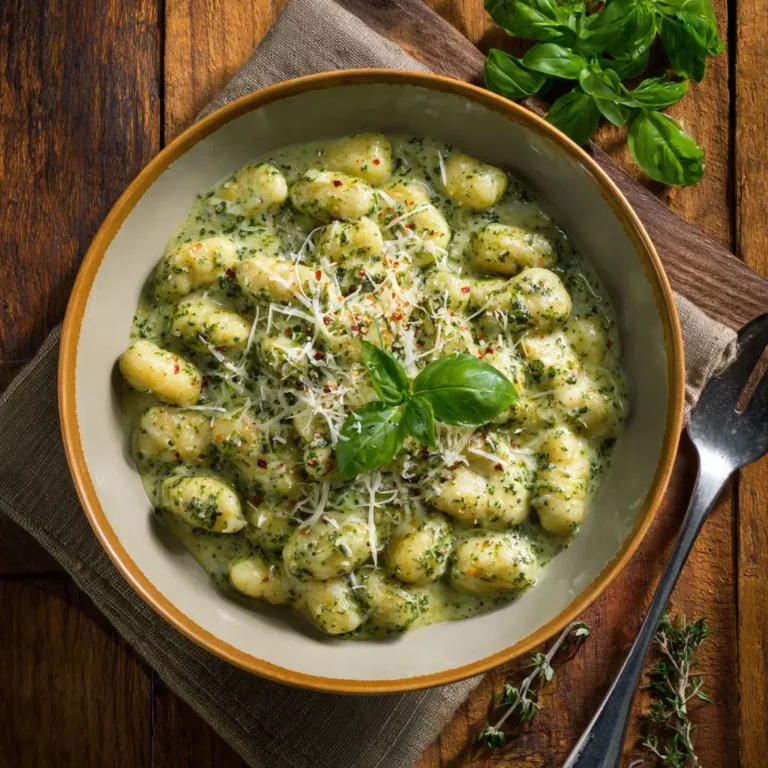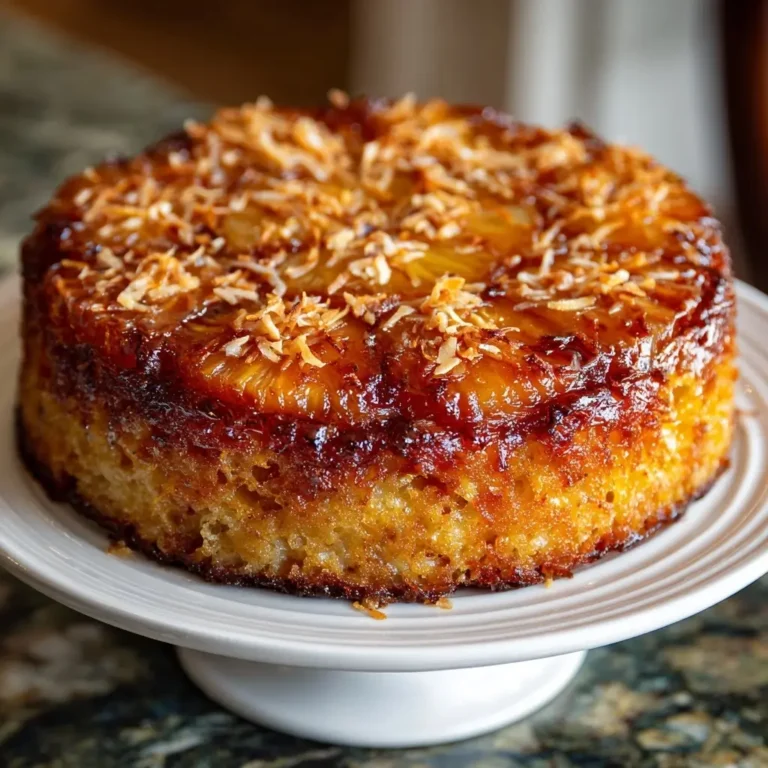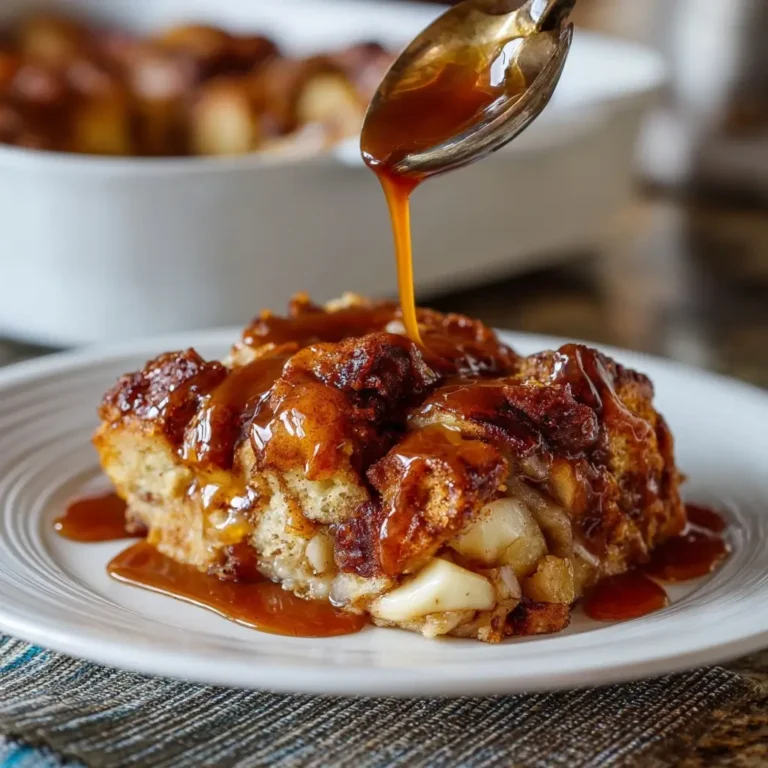Shirataki Noodles with Chicken, Feta & Tomato
Shirataki Noodles with Chicken, Feta & Tomato is a light, nutritious, and incredibly satisfying dish that combines the unique texture of shirataki noodles with tender grilled chicken, tangy feta cheese, and juicy ripe tomatoes. This recipe is perfect for those following low-carb, keto, or gluten-free diets, yet it’s flavorful enough to win over even traditional pasta lovers. Packed with protein, healthy fats, and fresh vegetables, this meal offers a balanced profile while remaining low in calories and carbohydrates. Whether you’re aiming to lose weight, manage blood sugar, or simply enjoy a wholesome dinner, this dish delivers on all fronts.
The History
Shirataki noodles have their roots in Japanese cuisine, where they’ve been consumed for centuries as part of Buddhist vegetarian traditions and regional dishes across Japan. The name “shirataki” translates to “white waterfall,” a poetic reference to their translucent, gelatinous appearance that resembles cascading waterfalls. Traditionally made from the konjac yam (also known as devil’s tongue yam), these noodles are extracted from glucomannan fiber—a highly soluble dietary fiber renowned for its health benefits. Shirataki was historically valued not only for its texture but also for its role in promoting digestive health and satiety.
Over time, shirataki gained popularity beyond Asia, particularly in Western countries where low-calorie and low-carb eating patterns like ketogenic and paleo diets began to rise. As global interest in functional foods grew, shirataki became a staple substitute for wheat-based pasta among health-conscious individuals. The integration of shirataki into fusion dishes—such as combining them with Mediterranean ingredients like feta, tomato, and grilled chicken—represents a modern culinary evolution. This blend honors both Eastern wellness principles and Western flavor profiles, creating meals that are both nourishing and globally inspired.
Ingredients Breakdown
Each ingredient in this Shirataki Noodles with Chicken, Feta & Tomato recipe plays a crucial role in balancing flavor, texture, and nutrition:
- Shirataki Noodles: Made from konjac root, these zero-calorie, zero-net-carb noodles are rich in glucomannan fiber. They absorb flavors well and provide a chewy, slightly rubbery texture when properly prepared.
- Chicken Breast: A lean source of high-quality protein that supports muscle growth and repair. Grilled or pan-seared, it adds heartiness and makes the dish more filling.
- Feta Cheese: A brined curd cheese traditionally made from sheep’s or goat’s milk. It contributes a creamy mouthfeel and sharp, salty tang that contrasts beautifully with the sweetness of tomatoes.
- Cherry Tomatoes: Bright, juicy, and packed with antioxidants like lycopene and vitamin C. Their natural acidity enhances the overall freshness of the dish.
- Olive Oil: Used for sautéing and dressing, extra virgin olive oil brings heart-healthy monounsaturated fats and a rich, fruity aroma.
- Garlic: Minced fresh garlic adds depth and aromatic complexity, enhancing savory notes without overpowering other ingredients.
- Fresh Basil: Adds a fragrant, slightly sweet herbal note that complements the tomato and feta perfectly.
- Lemon Juice: Freshly squeezed lemon juice brightens the entire dish, cutting through the richness of the cheese and oil.
- Salt and Black Pepper: Essential seasonings that elevate all components by enhancing natural flavors.
- Red Pepper Flakes (optional): For those who enjoy a bit of heat, a pinch adds subtle spiciness and warmth.
Together, these ingredients form a harmonious balance between umami, acidity, creaminess, and freshness—making every bite exciting and satisfying.
Step-by-Step Recipe
- Prepare the Shirataki Noodles: Remove the noodles from their packaging and drain thoroughly. Rinse under cold running water for at least 1–2 minutes to eliminate any residual odor (a faint fishy smell is common due to the packing liquid). Place the rinsed noodles in a large pot of boiling water and cook for 2–3 minutes. This step helps improve texture by making them firmer and less rubbery. Drain again and set aside.
- Cook the Chicken: Season chicken breasts generously with salt, black pepper, and a drizzle of olive oil. Heat a non-stick skillet over medium-high heat. Add the chicken and sear for 5–6 minutes per side, or until golden brown and cooked through (internal temperature should reach 165°F / 74°C). Remove from heat and let rest for 5 minutes before slicing into thin strips or bite-sized pieces.
- Sauté Aromatics: In the same skillet (or a clean one if preferred), add 1 tablespoon of olive oil. Sauté minced garlic over low heat for about 30 seconds until fragrant—be careful not to burn it. Add halved cherry tomatoes and continue cooking for 3–4 minutes until they begin to soften and release their juices.
- Combine Noodles and Sauce: Add the boiled shirataki noodles to the skillet with the tomatoes and garlic. Toss gently to combine. Cook for an additional 2–3 minutes to allow the noodles to absorb the flavors. Squeeze in fresh lemon juice and sprinkle with red pepper flakes (if using).
- Add Chicken and Finish: Stir in the sliced grilled chicken. Crumble feta cheese over the top and gently fold in torn fresh basil leaves. Taste and adjust seasoning with additional salt, pepper, or lemon juice as needed.
- Serve Immediately: Transfer to serving plates while warm. Optionally, garnish with extra basil, a drizzle of olive oil, or a sprinkle of cracked black pepper.
Tips
- Rinse Thoroughly: Never skip rinsing the shirataki noodles—this removes the alkaline taste and improves overall palatability.
- Dry-Fry for Better Texture: After boiling, some chefs recommend dry-frying the noodles in a hot pan for 2–3 minutes without oil to further reduce moisture and mimic al dente pasta.
- Use Fresh Ingredients: Opt for vine-ripened tomatoes and freshly grated lemon zest for maximum flavor impact.
- Don’t Overcook Chicken: To keep it moist and tender, avoid overcooking. Letting it rest after grilling ensures juiciness.
- Basil Last: Add fresh basil just before serving to preserve its vibrant color and aromatic oils.
- Toast the Feta (Optional): For a gourmet twist, lightly pan-sear or bake the feta cubes until golden for a richer, nuttier flavor.
- Batch Cooking Tip: While best served fresh, you can prep components ahead: cook chicken, chop veggies, and rinse noodles in advance, then assemble quickly when ready to eat.
Variations and Customizations
This versatile dish lends itself beautifully to creative adaptations depending on dietary preferences, seasonal availability, or cultural influences:
- Vegan Version: Omit chicken and feta. Replace with marinated tofu, tempeh, or chickpeas for plant-based protein. Use vegan feta made from almonds or coconut.
- Seafood Twist: Swap chicken for grilled shrimp or seared scallops for a lighter, coastal-inspired variation.
- Keto Boost: Add sliced avocado or olives to increase healthy fat content and enhance satiety.
- Spicy Kick: Increase red pepper flakes or add a dash of sriracha or harissa paste for bold heat.
- Mediterranean Upgrade: Include kalamata olives, cucumber, roasted red peppers, and a splash of balsamic glaze for a Greek salad-style fusion.
- Creamy Option: Stir in a spoonful of mascarpone, ricotta, or Greek yogurt for a creamier sauce base.
- Pesto Infusion: Swirl in a teaspoon of basil pesto during mixing for intensified herbaceous flavor.
- Noodle Alternatives: Try this recipe with black soybean shirataki (higher protein) or mix half shirataki with zucchini noodles for varied texture.
- Grain Bowl Style: Serve over cauliflower rice or quinoa for a heartier version suitable for non-keto diets.
Health Considerations and Nutritional Value
This Shirataki Noodles with Chicken, Feta & Tomato recipe shines in terms of nutritional excellence, offering numerous benefits:
- Low in Calories and Carbs: Shirataki noodles contain virtually no calories or digestible carbohydrates, making them ideal for weight management and blood sugar control.
- High Fiber Content: Glucomannan in shirataki promotes gut health, feeds beneficial bacteria, and increases feelings of fullness, helping prevent overeating.
- Rich in Protein: Chicken breast provides approximately 30g of high-biological-value protein per 100g, supporting muscle maintenance and metabolic function.
- Heart-Healthy Fats: Olive oil and feta contribute monounsaturated fats and conjugated linoleic acid (CLA), which may support cardiovascular health in moderation.
- Antioxidant-Rich: Tomatoes are loaded with lycopene, a powerful antioxidant linked to reduced risk of chronic diseases including certain cancers and heart conditions.
- Vitamins and Minerals: The dish delivers vitamin C (from tomatoes and lemon), calcium and phosphorus (from feta), B vitamins (from chicken), and trace minerals essential for energy production and immune function.
- Digestive Benefits: Glucomannan acts as a prebiotic and bulking agent, aiding regularity and potentially improving symptoms of constipation.
- Blood Sugar Friendly: With minimal glycemic load, this meal is excellent for diabetics or insulin-resistant individuals.
Note: Some people may experience mild gastrointestinal discomfort (gas, bloating) when first consuming shirataki due to the high fiber content. Start with smaller portions and gradually increase intake to allow your digestive system to adapt. Also, ensure adequate hydration when consuming glucomannan-rich foods, as fiber absorbs water in the gut.
Ingredients
- 1 package (7–8 oz / 200g) shirataki noodles
- 2 boneless, skinless chicken breasts (about 6 oz each)
- 1 cup cherry tomatoes, halved
- 1/2 cup crumbled feta cheese
- 2 tablespoons extra virgin olive oil (divided)
- 2 cloves garlic, minced
- 1 tablespoon fresh lemon juice (about 1/2 lemon)
- 1/4 cup fresh basil leaves, torn
- Salt and freshly ground black pepper, to taste
- Pinch of red pepper flakes (optional)
Directions
- Drain and rinse shirataki noodles under cold water for 1–2 minutes. Boil in a pot of water for 2–3 minutes, then drain and set aside.
- Season chicken breasts with salt and pepper. Heat 1 tbsp olive oil in a skillet over medium-high heat. Cook chicken for 5–6 minutes per side until internal temperature reaches 165°F. Rest for 5 minutes, then slice.
- In the same skillet, add remaining olive oil. Sauté garlic for 30 seconds, then add cherry tomatoes. Cook 3–4 minutes until softened.
- Add shirataki noodles to the skillet. Toss with tomatoes and garlic. Cook 2–3 minutes to absorb flavors. Stir in lemon juice and red pepper flakes.
- Add sliced chicken to the pan. Gently mix in crumbled feta and torn basil. Adjust seasoning with salt and pepper.
- Serve immediately, garnished with extra basil or a drizzle of olive oil if desired.
FAQ
Q: Are shirataki noodles safe to eat every day?
A: Yes, in moderation. They’re safe for most people, but excessive daily consumption without sufficient hydration may lead to digestive discomfort. Balance them with other fiber sources and whole foods.
Q: Can I use frozen chicken?
A: Yes, but thaw it completely before cooking for even results and food safety. Quick-thaw in cold water or microwave defrost setting.
Q: Why do my shirataki noodles taste rubbery?
A: Undercooking or insufficient drying can leave them too soft or chewy. Try boiling longer (up to 5 min) and dry-frying in a hot pan afterward to improve texture.
Q: Is feta cheese keto-friendly?
A: Yes! Feta is relatively low in carbs (about 1–2g per ounce) and high in fat and flavor, making it a great choice for ketogenic diets.
Q: Can I make this ahead of time?
A: Best served fresh, but you can prep components separately. Reheat gently on the stove—avoid microwaving, which may alter noodle texture.
Q: What can I substitute for shirataki?
A: Zucchini noodles (zoodles), spaghetti squash, or hearts of palm noodles work well as lower-carb alternatives, though they have higher calorie and carb counts.
Q: How long does leftover chicken last?
A: Cooked chicken stays fresh in the fridge for 3–4 days. Store separately from noodles to maintain quality.
Summary
Shirataki Noodles with Chicken, Feta & Tomato is a nutrient-dense, low-carb meal that blends Japanese-inspired noodles with Mediterranean flavors for a healthy, delicious, and satisfying dinner. Packed with protein, fiber, and antioxidants, it supports weight loss, digestion, and overall wellness without sacrificing taste.






